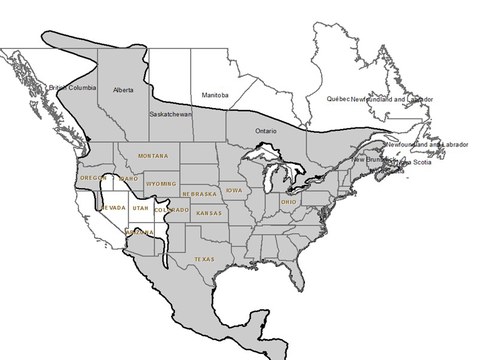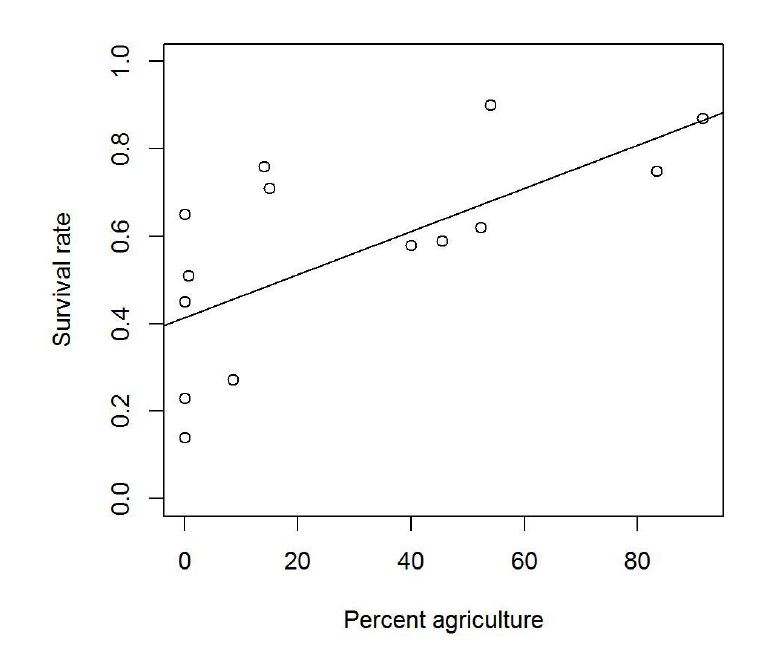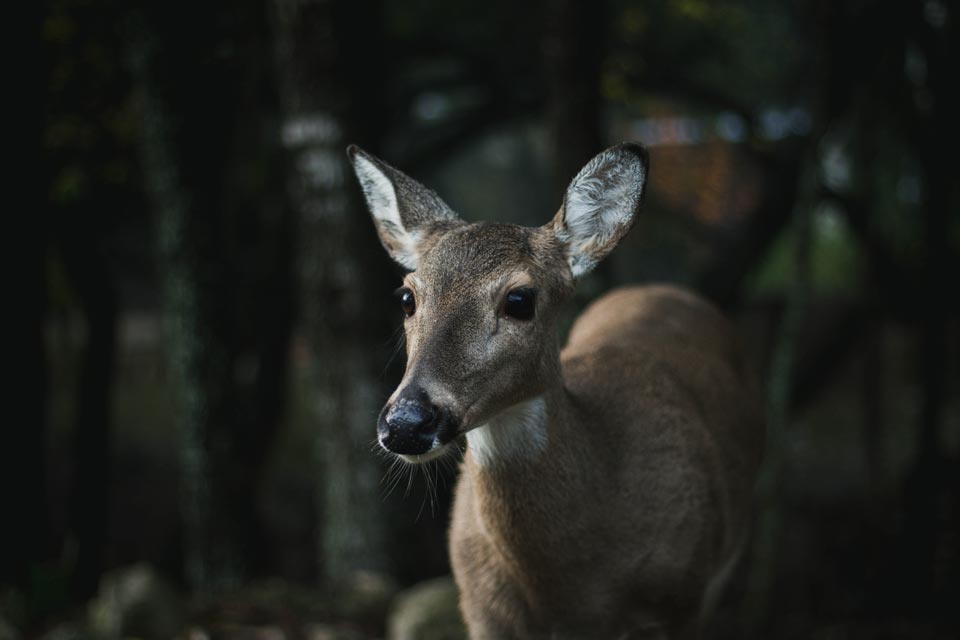Below is the range of white-tailed deer in North America.

Map from: Gallina, S. and Lopez Arevalo, H. 2016. Odocoileus virginianus. The IUCN Red List of Threatened Species 2016: e.T42394A22162580. http://dx.doi.org/10.2305/IUCN.UK.2016-
2.RLTS.T42394A22162580.en
Some fawns grow up in the wind-swept plains of Iowa while others spend their first days in the thick understory of Pennsylvania’s beautiful forests. As you can imagine, where a fawn is born can influence its chances of survival.
Understory vegetation could provide a fawn a nice hiding spot from the big bad bears of the woods. On the other hand, fawns in wide open agricultural fields may have access to better noms. Since agricultural fields generally have better soil, they may lead to higher quality food sources.
Agriculture is commonly thought to benefit large herbivore species by potentially providing higher quality food. Could this perk be related to fawn survival?
To answer this question, I looked to see if there was a relationship between the amount of agriculture on a landscape and fawn survival rates. Could a meta-analysis of fawn survival studies from the last four decades answer this question???
Why ask about agriculture? We do live in PennSYLVANIA where forest is king. It’s 2 sides of the same coin actually. The relationship between fawn survival and forest cover is just the opposite of looking at the relationship between fawn survival and agriculture! Forest cover and agricultural cover are inversely related. As one cover type goes up, the other cover type goes down because study areas had few other cover types.
So what did the analysis say? Sure enough, landscapes with more agricultural land cover are associated with greater fawn survival.

The relationship between agricultural land cover and fawn survival is pretty obvious. The “why” of the relationship is a bit more difficult. It wasn’t possible to look at the amount of available food in each study or the different crop types to see if food availability was the reason for increased fawn survival in comparison to forested landscapes.
But what about causes of mortality? We don’t know exactly what they were eating but we do know how they were dying. Were fewer fawns dying of natural causes like disease and starvation? Were predators the same? And what about those pesky tractors?
More fawns end up living if they have an ag field in their backyard. And we are going to see if the questions above can help us find out why. Stay tuned.
M.S. Graduate Student
Previous article in this series:
Bunches, Heaps, and Gobs of Fawns
Next article in this series:
If you would like to receive email alerts of new blog posts, subscribe here.
And Follow us on Twitter @WTDresearch
